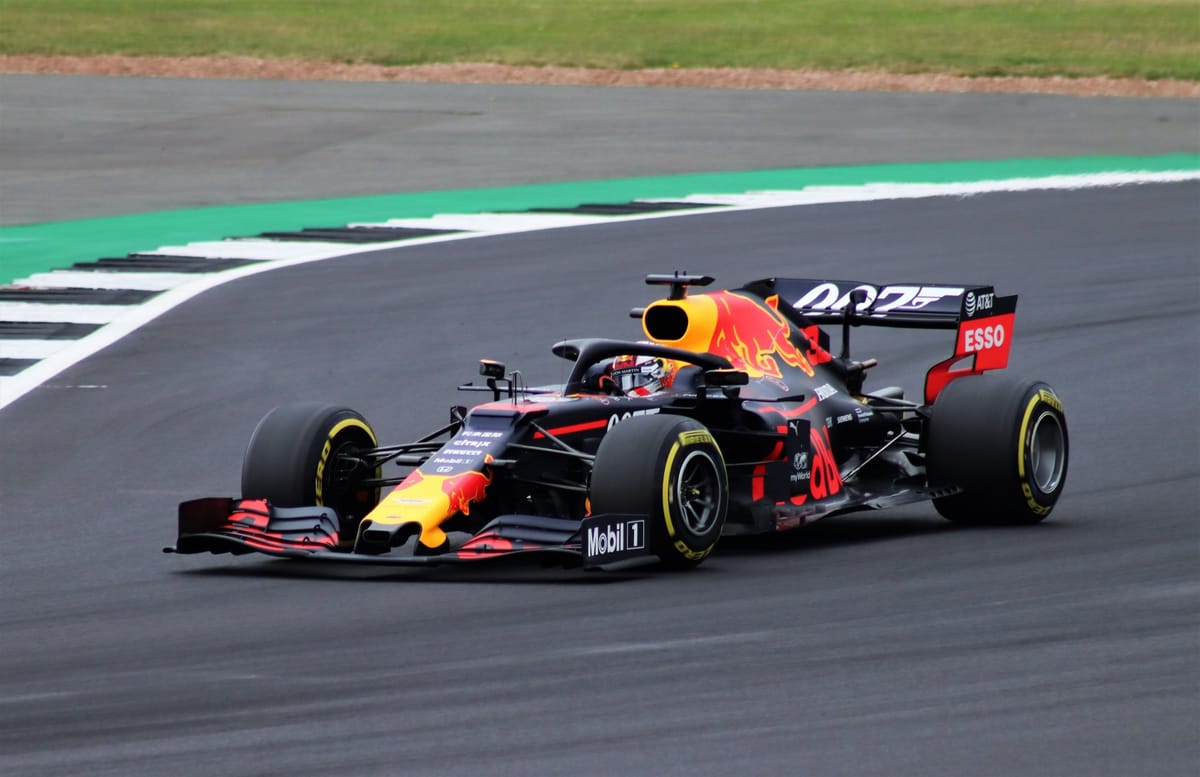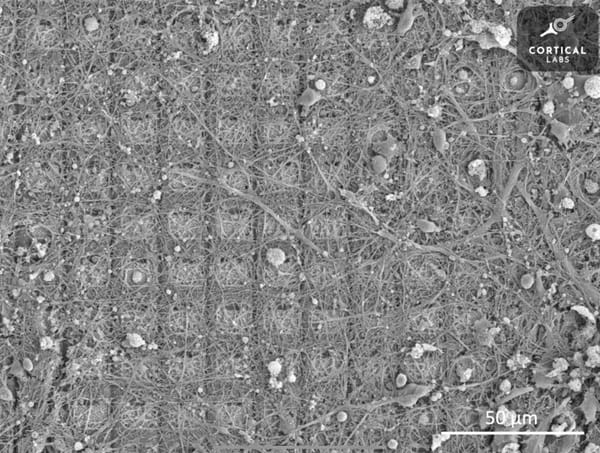Formula 1: Science and Technology in Pole Position
F1 is more than just a race - it’s a showcase of engineering brilliance. With turbocharged V6s, energy recovery systems, and state-of-the-art aerodynamics, teams battle for every fraction of a second. Explore the tech behind the world's fastest sport and how it fuels innovation beyond the track.

To some people, Formula 1 is just a car race, but to others, it is an entertaining, exhilarating motorsport possessing cars that are the apotheosis of automotive engineering. Throughout its 73-year history, the sport has seen 172 constructors, each engineering their car for lap times a quarter of a second shorter. F1 currently has a viewership of over 445 million, with each viewer being heavily invested in both the viewing experience, as well as the racing strategies. However, the most interesting part of these mass sporting events are the scientific and technological breakthroughs made in the cars.
The core of a Formula 1 car lies in its powerful engines. They are powered by 1.6 litre V6 engines that are capable of delivering 1000 horsepower, enough to allow the car to travel at speeds of 220 mph. The turbocharged V6 was preferred over the V8 predecessor due to energy efficiency. The V8 engines not only consumed more energy but also remained slower, resulting in only 750bhp-800bhp. Modern “power units” (a new term for F1 engines) are turbocharged to recycle energy and hence boost power output. Turbochargers are important as they use the exhaust gas from the engine to drive a compressor, which helps to increase the air pressure inside the car, hence improving the rate of combustion and allowing the engine to release more power. But the technological phenomenon here is found in the racing car’s ability to maximise energy efficiency. Formula 1 engines contain an Energy Recovery System (ERS), which consists of an MGU-K (Motor Generator Unit-Kinetic) and an MGU-H (Motor Generator Unit-Heat). The role of the MGU-K is to convert the kinetic energy from braking into electricity. The MGU-K can also act as a motor when the driver accelerates, providing an extra 160 horsepower. The MGU-H captures the heat energy from the exhausts and also converts this into 4 megajoules of electrical energy, which is then used by the MGU-K as a motor.
Whilst an F1 car looks far more complicated than the cars we see every day, they use a similar fuel to ordinary cars. Since 1996, Formula 1 cars have had to use fuel which followed the Euro 95 standard, meaning that it has to be created from the same compounds found in standard petrol. The fuel for F1 must contain unleaded racing gasoline (very similar to regular gasoline but with a few more additives), but they do utilise the premium road fuel that is available to the public. However, while the compounds must be the same as standard petrol, the concentration of the different compounds can be altered and therefore optimised for specific F1 cars. This process is carried out by the team’s designated fuel supplier. The fuel regulations in Formula 1 have also impacted commercial rules. For example, a rule which stated that fuels must contain 5.75% of biocomponents led to the same regulations being put in place for commercial fuels in Europe two years later.
The outer shell of an F1 car has evolved over time, having culminated in what is now thought to be the most advanced for any racing car. One of the key reasons for the high performance of an F1 car on the racetrack is downforce. Downforce is a vertical force that affects all vehicles based on their aerodynamics. Downforce helps to keep the car on the track and provides extra grip. Adjustments to the aerodynamics can impact downforce, with an increase in downforce leading to additional grip on the track but also occasionally reducing the maximum speed of the cars. Therefore, it is essential that teams develop their F1 models in such a way that they balance downforce effectively.
There are many ways in which the amount of downforce can be increased. Downforce is generated by the front and rear wing. The front wing helps to direct the airflow towards the car, while the rear wing creates downforce. The wing end plates, found at the end of the front and rear wings, help channel air more efficiently, reducing turbulence and increasing grip on the track.
Optimising downforce in Formula 1 cars presents a significant challenge for engineers. One of the major obstacles is porpoising, where the front of the car jitters up and down during high speed, hence disrupting the flow of air around the wings and leading to a lack of downforce which therefore reduces the grip of the car.
However, modern engineering has introduced innovative techniques to refine the aerodynamics of Formula 1 cars, and therefore enhance their downforce. A special, relatively new tye of paint called flow-vis can help engineers visualise the airflow over the car. The paint is mixed with a light oil (typically paraffin) which dries as the car moves at high speeds. This allows engineers to better analyse the airflow patterns around certain parts of the car, providing insights into potential areas for improvement.
Another advanced tool used in F1 aerodynamics is the wind tunnel. There are two types of wind tunnel: open and closed. In an open wind tunnel, the car is tested in a large open space with constant airflow. In a closed wind tunnel, a scaled down model of the car is tested in a smaller, more controlled testing environment. With this data, engineers are able to understand how air currents affect performance and are able to optimise the cars accordingly.
F1 cars all have a feature known as “DRS” (Drag Reduction System). When DRS is closed, the car generates more downforce, improving its grip but limiting its top speed. When activated, a flap opens, reducing drag and allowing higher speeds (albeit with a reduction in grip). DRS can be used multiple times during a race, but the car must be within one second of the car ahead and must also be in a set ‘activation zone’ (parts of the track which are more suitable for high speeds).
The floor of an F1 car is an important yet often overlooked component. While not visible during TV broadcasts, the floor also plays a role in generating downforce. The floor has a sophisticated aerodynamic structure which helps to maximise airflow and hence form a low pressure area beneath the car. This creates a pressure difference between the top and bottom of the car, helping to generate downforce. The floor even has a surprising number of FIA regulations which determine its size and position.
The work on the entire car and my article would be completely irrelevant had it not been for the tyres. There are three main tyre compounds: soft, medium and hard (however a full wet and intermediate compound also exist). The tyres vary between providing the best handling and performance to providing more endurance. The soft compound is the fastest, but it wears out rather quickly compared to the other compounds, and the hard tyres generally have less grip than the others but tend to last the longest. Medium tyres provide a compromise between the handling of soft tyres and endurance of hard tyres. Drivers have a limited choice of tyres (depending on the situation) which often make it difficult for teams to optimise both performance and race longevity.
Despite the thrill of high speed driving, safety remains paramount in Fromula 1. Hence, F1 cars have extensive safety measures to prevent any damage to the driver. A monocoque, made of carbon fibre and a layer of Kevlar, surrounds the area where the driver is seated. It is penetration resistant and must undergo numerous crash tests before use. All F1 cars since 1996 are also equipped with a headrest as drivers can experience up to 6G of force. The headrest is made of Confor Foam, a very durable material which also helps to remove moisture from the body of the driver. Since 2003, the HANS (Head and Neck Support) device has been credited with saving countless lives. The device joins the helmet to the carbon fibre collar, reducing neck tension in an accident by 72% through increasing the stability in the driver’s head. A high speed, driver facing camera is also now installed in most cars. This camera captures what happens inside the car at 400 frames per second, providing crucial data for crash analysis. A more recent introduction is the halo device (launched in 2018), while it was quite controversial at the time for breaking the convention of traditional single seater motorsport by slightly enclosing the cockpit, it provides crucial protection to the driver from flying debris and collisions.
However, Formula 1 would never have reached its viewership heights had it not been down to the highly advanced technology that broadcasts each race. In fact, it has been calculated that only six seconds elapsed between Max Verstappen crossing the finishing line at a Grand Prix and the footage appearing on television screens, thousands of miles away. During “race week”, a temporary media headquarters transmits 500 terabytes of data per race (this is 50 times the amount of data that the Hubble Space Telescope sends in a year). Around the track, there are 38 antennas installed in order to help transmit 120 videos from the track to the TV while 147 microphones are also placed to pick up the sound of the car as they go by to help enhance the experience of the viewer. Graphics overlays shown on TV broadcasts are made possible by the 60 data points communicated every second to the media and technology centre. For entertainment purposes, 90 cameras in total are fitted onto cars. The video being recorded is also perfectly encoded and time stamped so it is in sync with the audio of the engines.
Future developments in F1 broadcasting may include 8K resolution, and AI operated cameras (although humans are currently better at operating cameras). Drones could be difficult to implement into Formula one due to the high speeds required to be able to capture the Formula 1 cars (although Redbull have managed to create a drone which can keep up with an F1 car). Drones have currently beenen used to provide the impressive post-race lightshow at the Grands Prix of Las Vegas and Saudi Arabia.
Technological advancements have propelled Formula 1 to global popularity, combining high-performance engineering with unparalleled entertainment. From powerful engines and recyclable energy to the wonderful viewing experience of millions on screens, F1 represents the pinnacle of motorsport to many, where science and technology dictate success. The motto "Citius, Altius, Fortius"—Faster, Higher, Stronger—perfectly encapsulates the relentless pursuit of excellence in Formula 1, a sport where innovation reigns supreme.
Sources :
https://racingnews365.com/engine-f1
https://f1chronicle.com/what-fuel-do-formula-1-cars-use/
https://en.wikipedia.org/wiki/Formula_One_car
https://reederdistributors.com/blog/what-is-the-difference-between-racing-fuel-and-regular-fuel/
https://racingnews365.com/aerodynamics-f1
https://www.gpfans.com/en/f1-news/104261/f1downforceexplained
https://www.autosport.com/f1/news/f1-tyres-what-are-the-compoundsand-what-do-they-mean/10344284/
https://www.trelleborg.com/en/media/products-and-solutions-news/safety-formula
https://goturethane.com/what-is-urethane-and-how-is-it-used-around-the-world-today/
https://www.autosport.com/f1/news/behind-the-scenes-of-F1simmense-broadcast-opera7on/10510865/



